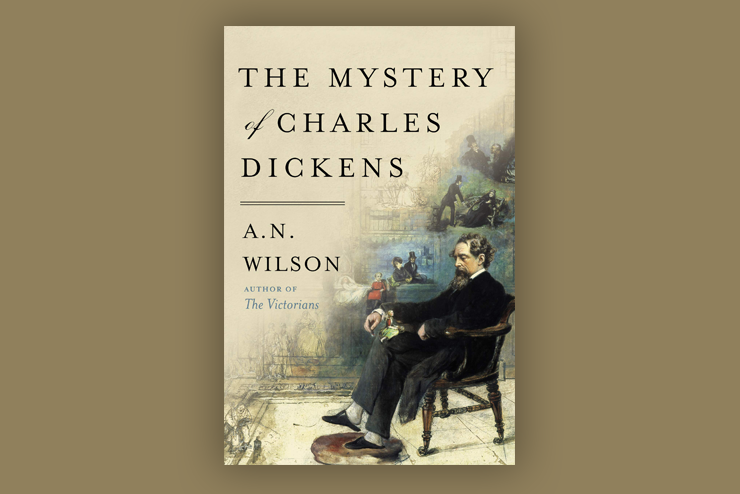The Mystery of Charles Dickens
By A. N. Wilson
Harper Collins
319 pp., $32.50
It’s no secret that Charles Dickens was in an unhappy marriage to his wife, Catherine, and that the great author was verbally and emotionally abusive to her. In his 1939 essay, “Dickens: The Two Scrooges,” Edmund Wilson tries to mitigate this unfortunate reality in the life of Dickens by suggesting the author must have had some regard for his wife, having given her 10 children.
That defense is laughable. One would certainly think it actually was Mrs. Dickens who gave her husband the 10 children. But Wilson’s point was to try to reconcile the binary nature of Dickens’ personality. On the one hand, Dickens had a generous heart and a concern for the downtrodden. On the other, he treated his own wife, sons, and daughters with contempt.

above: Charles Dickens and his wife, Catherine (public domain)
Yet while Wilson was able to identify Dickens’ dual nature, he fell short of explaining it. One might say Dickens possessed some of the contradictions of his Bleak House character Mrs. Jellyby, who devotes herself to distant causes in Africa while neglecting her own family.
The Dickens dichotomy is tackled anew, this time by author A. N. Wilson (no relation to Edmund) in his recent book, The Mystery of Charles Dickens. Wilson provides an informed look at Dickens that expands on Edmund’s observations.
Wilson notes that the existence of a charitable, public-facing Dickens along with an abusive, private Dickens was not the only inconsistency in his character. Dickens also, while preaching kindness and generosity toward the poor, harbored personal animosity to government and private institutions designed to address their needs. Wilson concludes that Dickens thought that the generosity of individuals is the only legitimate tool to assist the poor and destitute.
Alas, Wilson focuses mainly on The Mystery of Edwin Drood, Dickens’ last and unfinished novel, which Wilson dubiously claims is the great author’s most ambitious work. Wilson does little to unlock the mysteries of this work and even clouds his perspective with the unlikely assertion that Drood was murdered, insinuating that the title character’s uncle, John Jasper, is the likely culprit. He bases this claim on a comment made by Dickens’ son after the author’s death that Jasper is the guilty party.
First and foremost, it is by no means certain that Dickens intended Edwin Drood to be murdered. The unfinished book was bound to be one of Dickens’ longer works and it is conceivable that Drood—who has gone missing—might have reappeared later had the book only been finished.
Moreover, it is not clear Jasper would have been the prime suspect if Drood were murdered. Indeed, it is Neville Landless who is under suspicion, as he had a physical altercation with Drood, and has a reputation for intemperance. Both Jasper and Landless were in love with Rosa Bud, who is betrothed to Drood.
Notwithstanding that public attention is focused on Landless for being responsible for Drood’s disappearance and possible murder, Jasper is the more likely culprit, if there indeed has been a murder. Jasper is not an admirable character. Though head of his church choir, he leads the double life of an opium addict, and his romantic overtures to Rosa amount to extortion.
How Jasper was going to extort Rosa is never discovered.
It remains a mystery what Dickens would have done with these characters, as he died in 1870 before the book was completed. The Mystery of Charles Dickens, though an informative account by A. N. Wilson doesn’t solve either the fate of Edwin Drood or the puzzle of Charles Dickens’ dual personalities.

Leave a Reply